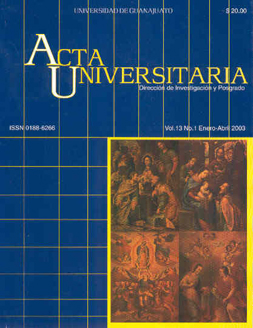Estabilidad Proteolítica de Prostephanus truncatus (Horn) (Coleoptera: Bostrichidae) en México
Published 2003-04-01
Keywords
- Prostephanus truncatus,
- Barrenador mayor de los granos,
- Isoenzimas proteolíticas,
- Electroforesis,
- Zimogramas.
- Prostephanus truncatus,
- Larger grain borer,
- Proteolytic isoenzymes,
- Electrophoresis,
- Zymograms.
How to Cite
Abstract
Prostephanus truncatus (Horn) (Coleoptera: Bostrichidae) is a pest of stored maize in Mexico, Central America, and some places of South America. In Africa has caused severe maize damage since its introduction. The outbreak in Africa seems to have its origin in Mexico or Central America. Differences found, in the electrophoretic pattern of proteasaes, on three P. truncatus colonies from Mexico, Tanzania, and Togo, suggest that they have different origin. In order to establish the genetic stability of P. truncatus in Mexico, adult insects from four States of the central part of this country were collected and determined their isoenzyme pattern of proteases. Results demonstrate that P. truncatus in Mexico, from different environmental conditions and locations, have the same proteolytic isoenzymes. This similarity supports the theory that Mexico could not be the origin of P. truncatus in Africa. Besides, it confirms that information of isoenzymes by electrophoretic zymograms, an easy and inexpensive tool, using the whole larva, is useful to differentiate insects of the same species from different geographic places.

